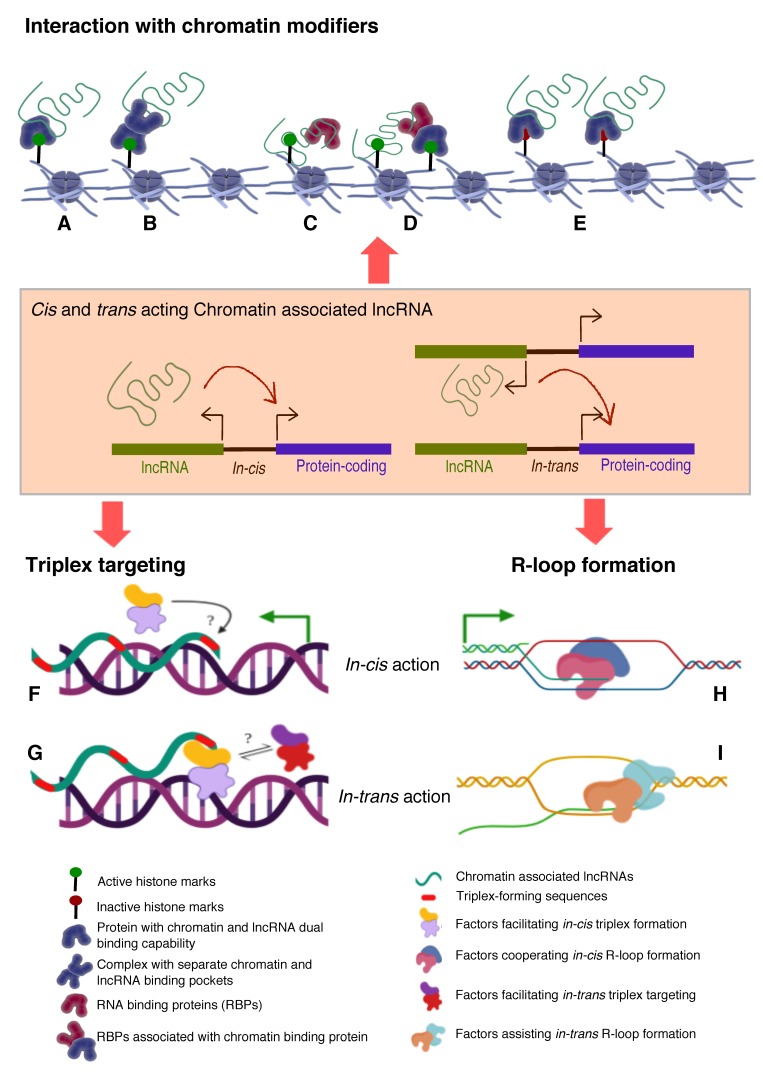Figure 2.
Mechanisms of chromatin targeting of lncRNAs.Three broad mechanisms that explain both cis and trans acting lncRNAs targeting to the chromatin. (A–E) depicts possible mechanisms by which lncRNAs associate with chromatin through interacting with chromatin modifiers, chromatin readers and/or RNA binding proteins. LncRNAs that interact with proteins with dual RNA-DNA binding properties can bind to chromatin enriched with active (A) or inactive histone modifications (E), or interacts with RNA binding subunit of a heterocomplex chromatin modifiers (B), or lncRNAs can directly be targeted (triplex or R-loop) to chromatin as a complex with any RBP (C) or histone modification readers can recruit RBP bound lncRNAs that can subsequently interact with chromatin via histone modifications (D). Inactive chromatin associated lncRNAs (iCARs) can be recruited to chromatin by a single (E) or heterocomplex chromatin modifiers (not shown) with histone reading as well as modifying functions and such recruitments leads to spreading of inactive chromatin through repressive histone marks. (F–G) Triplex and R-loop forming lncRNAs can target chromatin in cis vs. trans (F–I). There might be a same (F) or different (G) group of protein complexes that might play a role in either stabilizing triplex formation by cis (F) or trans-acting (G) lncRNAs via binding to triplex forming oligos (TFOs). Similarly, R-loop formation might be coordinated by different protein complexes in cis (H) as compared to (if any) in-trans targeting (I).

